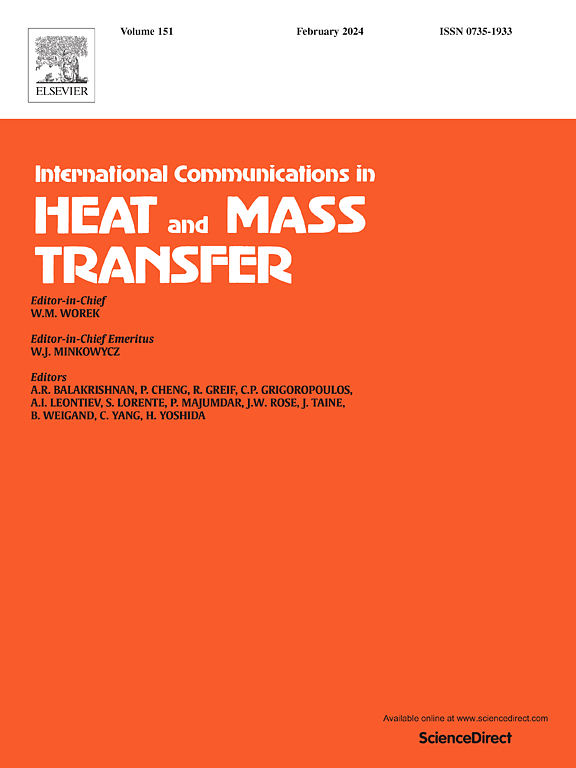Exploring Turbulence and micro-scale mixing mechanisms for enhancing jet impingement heat transfer using micro-roughness elements: A data-driven and numerical analysis
IF 6.4
2区 工程技术
Q1 MECHANICS
International Communications in Heat and Mass Transfer
Pub Date : 2025-02-05
DOI:10.1016/j.icheatmasstransfer.2025.108646
引用次数: 0
Abstract
This study uses machine learning to quantify micro-scale mixing mechanisms that enhance jet impingement heat transfer. Experiments and computational fluid dynamics (CFD) simulations tested flat, discrete protrusion, and continuous V-groove surfaces under Reynolds numbers(ReN) from 10,000 to 27,500 and nozzle-to-plate distances(NPD) between 2 and 5 times the diameter of the nozzle. An integrated approach combining experimental data, CFD, and four neural network models was used for comprehensive turbulence analysis. The neural networks, trained on the combined sixty datasets, showed high predictive accuracy with R-squared over 0.999 and Mean Absolute Error over 1e-7. The results highlight that micro-scale turbulence, characterized by Reynolds stress, dominates over operating parameters such as ReN and NPD in enhancing heat transfer. Discrete protrusions actively disrupt the thermal boundary layer, promoting vigorous mixing, while weaker turbulence and insulation effects in V-grooves contribute less. Percentage change analysis shows protrusions are more effective at extracting energy from jet and generating turbulence at smaller NPDs, but V-groove performance increases more strongly with rising distance. This data-driven analysis provides insight into surface roughness-induced mixing mechanisms and compares key turbulence parameters to assess thermal performance. The advanced understanding will aid in developing optimized designs for improved heat transfer in practical applications.
求助全文
约1分钟内获得全文
求助全文
来源期刊
CiteScore
11.00
自引率
10.00%
发文量
648
审稿时长
32 days
期刊介绍:
International Communications in Heat and Mass Transfer serves as a world forum for the rapid dissemination of new ideas, new measurement techniques, preliminary findings of ongoing investigations, discussions, and criticisms in the field of heat and mass transfer. Two types of manuscript will be considered for publication: communications (short reports of new work or discussions of work which has already been published) and summaries (abstracts of reports, theses or manuscripts which are too long for publication in full). Together with its companion publication, International Journal of Heat and Mass Transfer, with which it shares the same Board of Editors, this journal is read by research workers and engineers throughout the world.

 求助内容:
求助内容: 应助结果提醒方式:
应助结果提醒方式:


